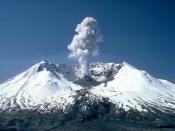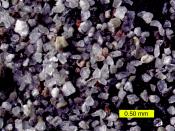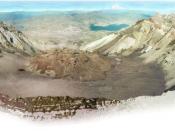Mount Saint Helens!
Volcanoes have been around since the beginning of time, they're very powerful and dangerous. These natural disasters can kill thousands of people, animals, and plant life in a matter of seconds. This essay will explain the history, the effects on both cultural and natural environment, and effects on humans of the most famous volcanic eruption in Washington State of Mount St. Helens.
Mount St. Helens is a Stratovolcano. Stratovolcanoes are formed by the gathering of lava and tephra and they're associated with convergent plate boundaries. The oldest rocks at Mt. St. Helens are about 40,000 to 50,000 years old. It began erupting about 2,500 years ago. It erupted several times during the 19th century, a major eruption in 1843. on the 20th march, 1980 a large group of earthquakes began to shake; and on the 25th of march 1980, the first steam explosion began. Before the eruption, the area around the mountain was rich with tourism for its natural beauty.
The Spirit Lake at the bottom of the mountain was blanketed with ancient forests with 800 year-old-trees. After the eruption of the 1980, the trees were knocked over or snapped in half and were left standing dead. The most naturally beautiful place was ended in a deserted landform.
The eruption of Mt. St. Helens has changed the face of the land. It changed the landscapes in some ways. Many animals and plants fall victims of this unsightliness eruption. The explode of Mt. St.. Helens had a force equivalent to more than 27,000 atom bombs. In few hours of the eruption, 234 square miles of forest lands were destroyed, and almost all life on the mountain disappeared. After the settlement of the ash, the area appeared in a desolate, uninhabitable wasteland. The mountain released gases to the atmosphere,


